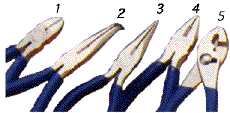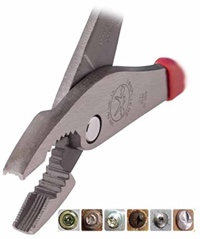
"Helping woodworkers online for the past 20 years"
Pliers 101
 |
Pliers have changed little since their origins, a pair of handles, a pivot, and the jaws are still the three common elements. Many specialized types have been developed over the years, all on this same mechanical principle. They have existed in some form or another for so long it is impossible to put a time to when they were invented. Hephaestus the Greek god of blacksmiths is often shown in illustrations with a form of pliers, or tongs. The marble piece at the right depecting him at his forge was sculpted in 1742. The mechanical design allows for greater leverage than one can get using their fingers, yet they can be used to manipulate objects too small to hold with the fingers.
|
|
These are the five most common styles used by the home handyman, every tool kit should include at the very least a pair of slip joint pliers. Even if you don't use them for their intended purpose they make excellent nut crackers.
1. Side Cutters Used in electrical work for cutting wire, jaws are at an angle so cuts can be made close to surface. Will also double as a small nail puller. 2. Bent Needle Nose Used in cramped areas or where straight in access is blocked. 3. Needle Nose Long thin jaws allow access to hard to get at locations. 4. Lineman's Used for cutting and twisting wire. 5. Slip Joint This is the most common type, they have a slip joint so that larger items may be gripped. Usually have a built in wire cutter and both flat and curved surfaces on the jaws. Screw Extractor Pliers
Screw extractor pliers have vertical grooves with teeth to grip broken screw shafts. |

